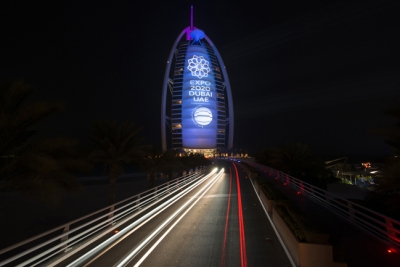Expo 2020 Dubai and the development strategy of the UAE
日期:11-07-2013来源:BIE Website

Dubai's bid is not only part of the Emirate's strategy to continue reinforcing its position as a world hub, it is also the occasion to show the world that Dubai and the UAE are shifting from "hard" to "soft" projects. As HE Sheikha Lubna Bint Khalid Al Qasimi - UAE Minister of development and International Cooperation- said during the Dubai 2020 symposium "the UAE is going from oil infrastructures to education and innovation projects and Dubai is shifting from a crossroads city to a multinational entity".
Mobility, sustainability and opportunity, the three subthemes the Dubai 2020 bid has chosen to articulate the discussion on partnerships, are the expression of Dubai's long-term strategy. Each subtheme is a pillar of the future development of Dubai and projects in all three fields are in motion.
It is easy to link mobility to Dubai. 57 million passengers have gone through Dubai International airport in 2012. The port of Jebel Ali is the first port in the Middle East and the largest container port between Rotterdam and Singapour. And more projects are underway. Dubai is currently building the International Al Makhtoum Airport near the port. Once completed, it will be able to handle 160 million passengers. Dubai's solid connection to the rest of the world allows Expo organizers to predict that 70% of expo visitors would be foreigners.
"Sustainability is part of the strategic vision for the future of Dubai" announced HE Sheikh Nahyan Mubarak al Nahyan, UAE Minister of Culture, during the symposium. With its 365 days of sun, Dubai sees great potential in the development of solar energy that could account for 50% of the Expo site's energy needs. The project that best illustrates Dubai's ambition in green energies is Masdar city, developed by the Masdar program launched in 2006 that develops green projects all over the world. Masdar city is the world's first sustainable site. Located 17 km away from Abu Dhabi it should ultimately welcome 40 000 inhabitants.
The third sub-theme, "Opportunity", is key to embrace the world of tomorrow. For Expo organizers, it means identifying new economic models that come from innovation. Dubai has allowed foreign investors in fields such as finance, services, transportation but also digital technologies and media to settle in Dubai thus creating innovation clusters.

Al Wasl and the shading structure
The design of the Expo site is based on these three subthemes. Located near Al Makhtoum airport and halfway between Dubai and Abu Dhabi, the site would be easily accessible from many transportation points in the UAE. The site itself would be divided in three areas dedicated to each sub theme. These thematic zones would lead up to Al Wasl,the main plaza. Countries would be able to set up their pavilion in the area that corresponds best to their development strategy. The project for the main structures of the site is inspired by souks: a shading structure protects visitors from the heat and direct sunlight, mixing innovation and oriental tradition. Sustainability is at the heart of the project, in terms of energy, but also in terms of infrastructure re-use. The project is based on modular design: an important part of the Expo will be dismantled and rebuilt to create appropriate infrastructures for the development of the region: a convention center that will become the Dubai Trade Center (project already underway), an Expo museum, a university but also apartment buildings and hotels.